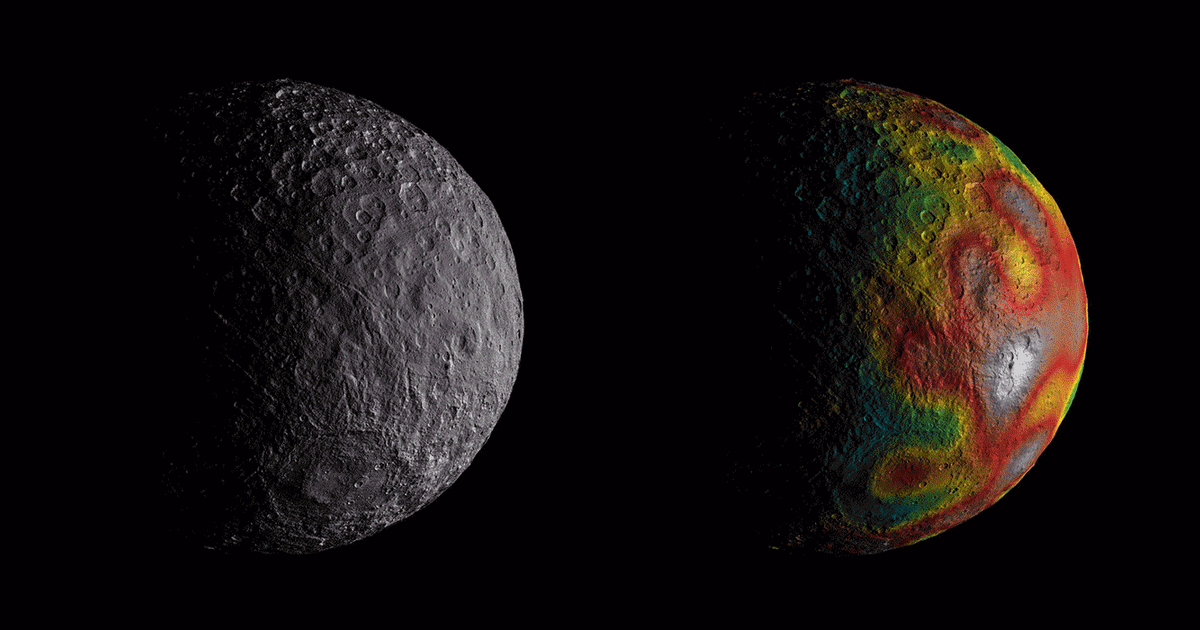
The asteroid Ceres, once thought to be just a large rock orbiting between Mars and Jupiter, has slushy volcanoes and liquid saltwater beneath its surface that may have formed an underground ocean in the past, new research suggests.
That suggests Ceres has buried reservoirs of saltwater and may still have an underground ocean.
Although Saturn's moon Enceladus and Jupiter's moon Europa are thought to have subsurface oceans, they are both much warmer than the nearly-frozen reservoirs of saltwater on Ceres.
But the frozen dwarf planet Pluto may also have had subsurface oceans, and the new studies of Ceres could have implications for future investigations of icy worlds, she said.
Early studies of Ceres using Dawn mission data suggested it had a residual saltwater layer, and the latest studies have strengthened that idea, said planetary scientist Carol Raymond of the Jet Propulsion Laboratory, the lead author of one of the studies.
The buried reservoirs, more than eight times saltier than oceans on Earth, are thought to start about 25 miles below the crust and have a temperature of about minus 31 degrees Fahrenheit — warm enough to have the consistency of slushy mud, but much too cold for life to evolve
“I was very excited to look at Vesta and I was sad to go to Ceres, because I thought it would be dark and boring,†De Sanctis said
The idea that Ceres ever had a buried saltwater layer is controversial, however, and some scientists think the latest studies are not conclusive
